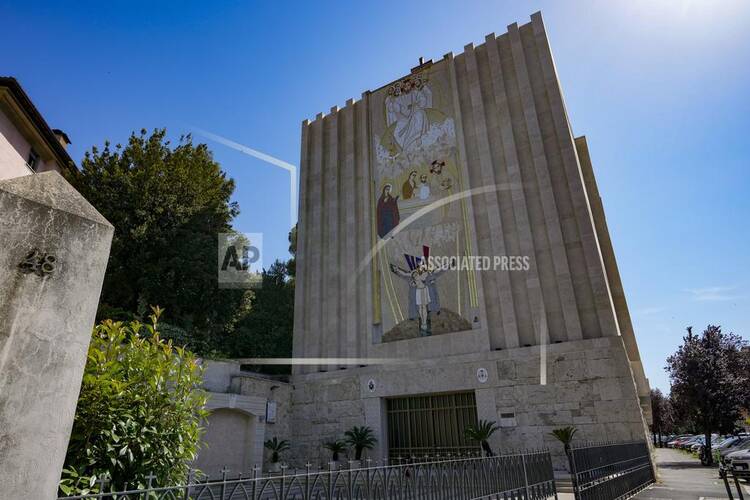ROME (AP) — The Knights of Columbus, an influential Catholic charitable organization, announced Thursday it will cover up its mosaics made by a famous ex-Jesuit artist accused of abusing women in a sign of solidarity with victims of abuse.
After studying the issue, the Knights said the organization would for now place fabric over the mosaics at its shrine in Washington, and at the chapel of its headquarters in New Haven, Conn. A permanent plaster covering “may be in order,” depending on the outcome of the Vatican’s investigation into the Rev. Marko Rupnik, the group said in a statement.
Rupnik, a charismatic Slovenian, has been accused by over 20 women of psychological, spiritual and sexual abuses over decades. But the Vatican and the Jesuits long ignored their complaints, until they burst into public domain in late 2022.
The decision by the Knights to cover the mosaics marks the first announcement by a major church, organization or diocese to heed victims’ requests to cover or remove the works that are in the public domain.
Rupnik’s mosaics grace some of the most important and most-visited Catholic shrines and basilicas around the world, including at Lourdes, France and Fatima, Portugal. The scandal about his alleged abuse posed the question about what to do with the mosaics because some of his victims say they were harmed during the creation of the artwork and that the mosaics were a triggering and traumatic reminder of what they had endured.
The bishop of Lourdes earlier this month put off any decision for now on what to do with the mosaics that decorate the facade of the popular Marian sanctuary.
The Jesuits expelled Rupnik from the order last year, and Pope Francis ordered a new trial against him following an outcry that his victims hadn’t received justice and suspicions that he had been protected by Jesuits up to and including the pope.
He hasn’t responded to the allegations and refused to cooperate with an investigation by his former Jesuit order, which determined that the women’s claims against him were “very highly credible.” But his collaborators have denounced what they called a media “lynching” against him.
The debate over what to do with his artwork exploded anew last month after the Vatican’s communications chief, Paolo Ruffini, strongly defended continuing to use Rupnik’s artwork on the Vatican News website.
His defense prompted the pope’s top anti-abuse adviser, Cardinal Sean O’Malley, to send a letter to all Vatican offices urging them to stop featuring Rupnik’s artwork. O’Malley said continuing to promote it ignores the pain of victims and could imply a defense of the Slovenian priest.
The Knights has been a big donor to the Vatican communications operations, and is currently funding the restoration of the baldacchino altar canopy in St. Peter’s Basilica.
The Knights decided to cover the mosaics at least until the Vatican decides Rupnik’s fate “because our first concern must be for victims of sexual abuse, who have already suffered immensely, and who may be further injured by the ongoing display of the mosaics at the shrine,” said Patrick Kelly, the head of the organization.
The Knights’ said its decision was the fruit of a long review process that involved speaking with victims of abuse, those who minister to them as well as pilgrims, moral theologians, art historians, bishops and other clergy.
“While opinions varied among those consulted, there was a strong consensus to prioritize the needs of victims, especially because the allegations are current, unresolved, and horrific,” the statement said.
The Knights noted that the U.S. context was taken into consideration in the consultations. The U.S. clergy sex abuse scandal erupted first in 2002 but the continued legacy of abuse and decades of cover-up by bishops and religious superiors has sorely undermined the credibility of the Catholic hierarchy.
In addition to the fabric covering at the Saint John Paul II National Shrine, the Knights said it would include a prayer for victims of abuse at all Masses there and provide educational materials about the mosaics to pilgrims.
The materials “will make clear that the continued display of the mosaics at the shrine during the process of consultation was not intended to ignore, deny, or diminish the allegations of abuse,” the organization said.








